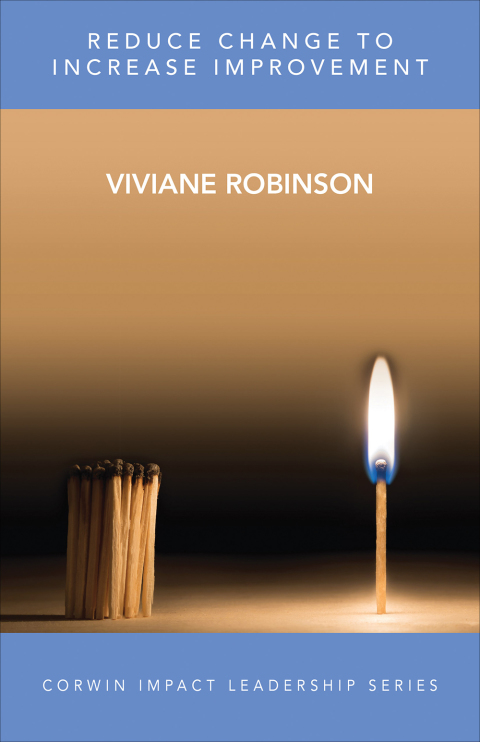Description
Efnisyfirlit
- List of Tables and Figures
- Preface
- Acknowledgments
- About the Author
- 1. Too Much Change, Not Enough Improvement
- Not All Change Is Desirable
- Distinguish Between Change and Improvement
- The Distinction Between Change and Improvement Increases Leaders’ Accountability
- The Distinction Fosters Vigilance About Whether Change Is Working
- Is the Change Worth It?
- Improvement Means Positive Impact on Learners
- The Impact of Leadership on Student Outcomes
- Reflection and Action
- 2. Understand the Challenge of Improvement
- Understand Theories of Action
- Espoused Theories of Action Versus Theories in Use
- Helping to Change Theories of Action
- Reflection and Action
- 3. Two Approaches to Leading Improvement: Bypass and Engage
- The Limitations of the Bypass Approach
- Double-Loop Learning Is Unlikely
- Too Little Critical Scrutiny of the Alternative Theory
- Bypass May Produce Mutual Mistrust
- The Bypass Approach: A National Initiative
- From Bypass to Engagement
- From Bypass to Engagement: A School Initiative
- Reflection and Action
- 4. The Four Phases of Theory Engagement
- Phase I. Agree on the Problem to Be Solved
- Data Can Suggest What Is Problematic
- Constructive Problem Talk
- Defensive Problem Talk
- Gain Sufficient Agreement
- Phase II. Inquire Into the Relevant Theory of Action
- Ask Direct and Respectful Questions
- Postpone Evaluation of the Theory
- Inquire Systematically Into Each Component of the Theory of Action
- Phase III. Evaluate the Relative Merit of the Current and Alternative Theories of Action
- Which Values Are Important?
- Theory Evaluation and Interpersonal Behavior
- Communicating Respectful Evaluations
- Phase IV. Implement and Monitor a New, Sufficiently Shared Theory of Action
- Use Implementation and Outcome Indicators
- Embed the Indicators in the Work of Improvement
- Reflection and Action
- 5. Learning How to Lead Improvement: Coaching That Engages Principals
- Excerpt 1: Engage Others’ Thinking
- Layer 1: The Coach Brings Relevant Knowledge
- Layer 2: The Coach Models How to Maintain a Shared Focus
- Layer 3: The Coach Enacts the Interpersonal Values of Respect, Truth-Seeking, and Internal Commitment
- Excerpt 2: The Self-Referential Critique
- How to Provide Self-Referential Critique
- Excerpt 3: Bypass and Reframing
- Reflection and Action
- 6. Learning How to Lead Improvement: Professional Learning That Engages Participants
- The Context
- Phase I. Agree on the Problem to Be Solved
- Phase II. Reveal the Relevant Theories of Action
- Construct a General Theory of Action
- Construct a Personal Theory of Action
- Phase III. Evaluate the Relative Merit of the Current and Alternative Theories of Action
- Construct and Evaluate an Alternative General Theory of Action
- Phase IV. Implement and Monitor a New, Sufficiently Shared Theory of Action
- Reflection and Action
- Afterword by Stephen Dinham
- References
- Index






Reviews
There are no reviews yet.